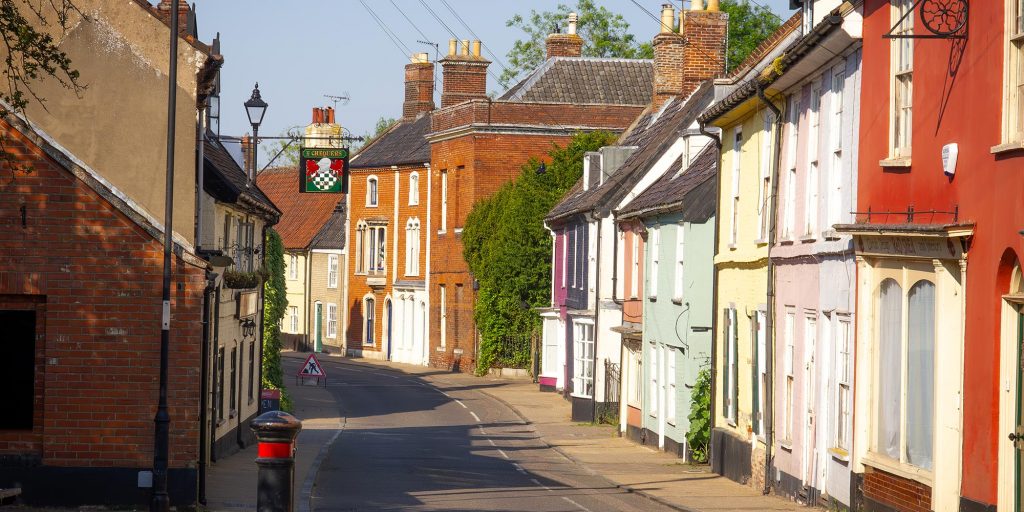Cork Bricks is the name of the short cobbled area in Earsham Street connecting with Broad Street. Its name resulted from a period in the 1890’s, when the adjacent Georgian property, Earsham Street House, was owned by Frederick Smith.
He was a wealthy solicitor, having inherited the practice and property from his father. An important local figure, he was Town Reeve for four periods of office between 1885 and 1899. He worshipped at St. Edmund’s Catholic church, and used a considerable part of his wealth to have the original chapel building, erected in 1823, rebuilt and enlarged. The façade was ornamented with an ornate stone carving depicting Saint Edmund, creating a striking architectural feature in St. Mary’s Street.
He also had the adjacent Catholic school rebuilt, and provided the handsome row of Almshouses in ‘mock-Tudor’ style in Outney Road. They were presented to the Town Trust to manage for the benefit of elderly retired residents.
At some time during the 1890’s his wife Katherine fell ill. Her bedroom was situated above the entrance into Broad Street, and the noisy clattering of horses, carriages, and carts over the cobblestones upset her, and impaired her recovery.
So Frederick decided to have the road surface re-paved with cork bricks to muffle the sounds, and provide his wife with the rest and recuperation she needed.
More recently it was thought this may have been an imaginary story to provide an explanation for the quaint name. But in the 1970’s, when the road was being repaired, cork bricks were discovered still in place below the surface. And there is one on display in the Bungay Museum to prove it.


